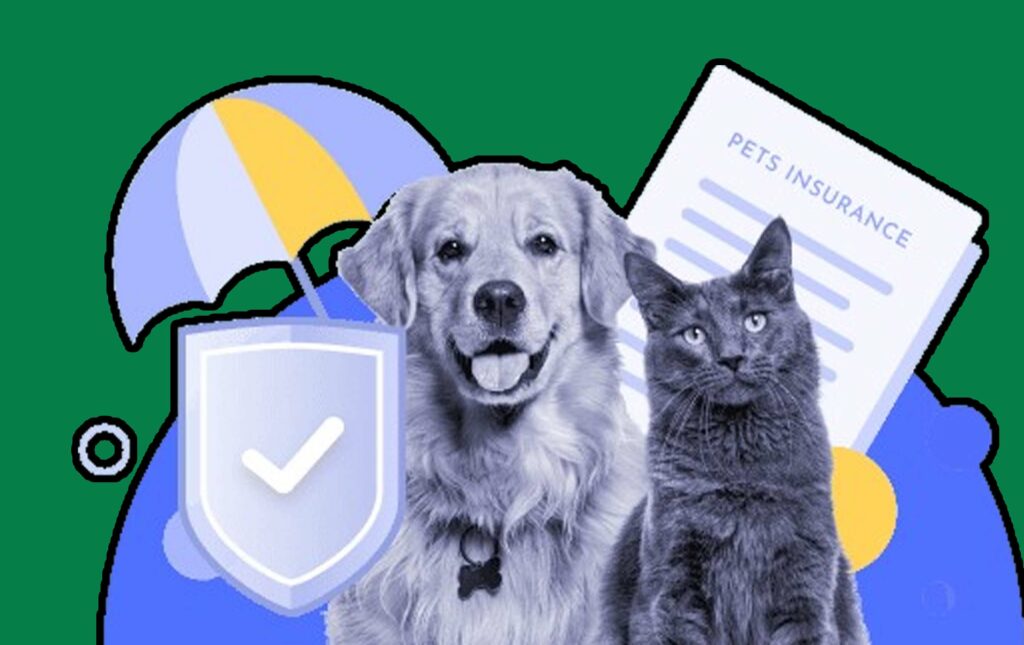Pet Insurance vs. Pet Savings Accounts – For many of us, pets are more than animals—they’re family. And just like any loved one, their health and well-being matter. But veterinary care can be costly. A routine check-up might cost under $100, but emergencies like surgery or cancer treatment can run into thousands of dollars.

This raises a key question for pet owners: How do you prepare financially for your pet’s health needs? Two of the most common strategies are pet insurance and pet savings accounts. Both approaches aim to reduce the stress of unexpected vet bills, but they work very differently. Let’s break them down Pet Insurance vs. Pet Savings Accounts.
Understanding Pet Insurance
Pet insurance functions much like human health insurance. You pay a monthly premium to an insurance provider, and in return, they agree to cover a portion of your pet’s medical expenses. Most pet insurance plans don’t pay the vet directly—you pay the bill first, then file a claim for reimbursement.
For example, if your dog swallows something dangerous and needs emergency surgery costing $3,000, an insurance policy covering 80% of eligible expenses would reimburse you about $2,400. That leaves you paying $600 out of pocket instead of the full amount.
Why Pet Owners Choose Insurance
The biggest advantage is financial protection against large, unexpected bills. No one plans for their cat to break a leg or their dog to be diagnosed with cancer, but these things happen. Insurance offers peace of mind, knowing that cost doesn’t have to be the reason you delay or decline care.
Another plus is that insurance spreads costs out over time through monthly premiums. Instead of saving thousands upfront, you pay smaller amounts consistently, ensuring coverage is there when you need it.
Drawbacks Pet Insurance
Pet insurance isn’t perfect. Monthly premiums can range anywhere from $20 to over $100 depending on your pet’s age, breed, and coverage. Over years, this adds up.
There are also coverage limits and exclusions. Pre-existing conditions are usually not covered, which means if your cat already has kidney disease, you won’t get reimbursed for treatments related to it. Some plans also exclude routine wellness visits, dental cleanings, or elective surgeries.
And because most plans work on a reimbursement model, you still need the money upfront to pay the vet. That can be stressful in an emergency if you don’t have cash or credit available.
Understanding Pet Savings Accounts
A pet savings account is much simpler. Instead of paying an insurance company, you save money yourself in an account reserved only for your pet’s medical needs. This could be a separate bank account, a high-yield savings account, or even a cash emergency fund envelope.
Let’s say you commit to putting aside $50 each month. In one year, you’d have $600 saved; in three years, $1,800. That money is always yours, can be used for any type of pet expense, and doesn’t require dealing with insurance claims.
Why Pet Owners Choose Savings Accounts
The biggest advantage is control and flexibility. You decide how the money is spent. If your dog needs a routine dental cleaning, you can use it. If your cat needs prescription food, no problem. There are no rules, exclusions, or waiting periods.
It’s also cost-efficient. If your pet remains healthy for years, you won’t feel like you’ve “wasted” money on premiums. Instead, you’ll have built up a financial cushion that’s still yours, even if it goes unused.
Drawbacks of Savings Accounts
The problem with savings accounts is timing. Building up enough funds takes time, and if an emergency happens early, you may not have enough saved. Imagine you’ve only saved $300 but your pet suddenly needs a $2,500 surgery, you’ll still have to find the remaining money elsewhere.
Additionally, saving consistently requires discipline. Unlike insurance, where premiums are automatic, a savings account depends on your commitment to regularly set aside money.
Pet Insurance vs. Pet Savings Account: At a Glance
| Feature | Pet Insurance (Risk Transfer) | Pet Savings Account (Self-Insurance) |
| Financial Safety Net | Covers catastrophic and unexpected costs (e.g., $5,000+ surgery) immediately. | Only covers what you have saved; may leave you vulnerable to large, sudden bills. |
| Monthly Cost | Fixed monthly premium (usually starts low and increases with pet’s age). | No fixed cost; voluntary contribution amount. |
| Flexibility of Funds | Low. Funds are restricted to covered accidents/illnesses (subject to deductible, co-pay, and limits). | High. Funds can be used for anything (routine care, food, training, or emergencies). |
| Pre-Existing Conditions | Generally NOT covered. Must enroll a pet when they are young and healthy. | Always covered, as it is your own money. |
| Reimbursement | You typically pay the vet upfront, then submit a claim for reimbursement. | You pay the vet directly with your own funds. |
| Long-Term Financial Risk | Low risk of a single financial catastrophe; you budget a predictable premium. | High risk of a major bill wiping out all your savings and requiring you to tap other funds. |
Which Option Is Better?
The answer depends on your situation, risk tolerance, and financial habits.
- For those worried about major emergencies: Pet insurance provides a safety net that a new savings account can’t match immediately. It’s particularly useful for breeds prone to hereditary health issues.
- For disciplined savers with stable finances: A pet savings account can be cost-effective and flexible, especially if you prefer not to deal with insurers and exclusions.
For the best of both worlds: Some pet owners combine both strategies—using insurance to cover big-ticket emergencies and maintaining a savings account for routine care and smaller expenses.



